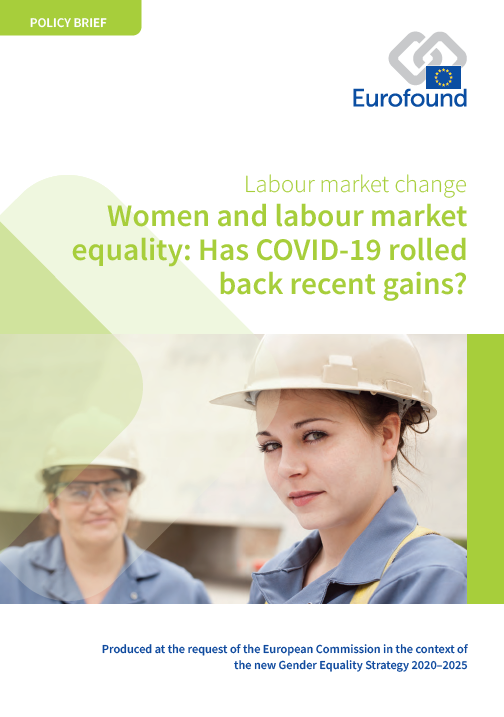Closing gender gaps in the labour market by achieving the equal participation of women is among the key objectives of the new Gender Equality Strategy 2020–2025. Despite significant progress in reducing the gender employment gap, it has stagnated over the past few years. Moreover, segregation in employment across sectors and occupations is still pervasive.
Against this background, this policy brief investigates the evolution of female labour market participation in the last decade and shows that the persisting gender employment gap cost Europe more than €320 billion per year in 2018, corresponding to 2.4% of EU GDP. The analysis also examines the disproportionate effects that the current COVID-19 crisis is having on working women, including the risk of disengagement from the labour market and the unintended consequences of confinement measures. It ends with a review of policy responses to the pandemic that have supported female employment in the short term and proposes how policy should respond in the long run to avoid rolling back decades of gains achieved in gender equality.
Key findings
More women are in employment now than ever before, with the female employment rate reaching 67.2% in 2019. However, after declining by more than a third since 2002, the gender employment gap – the difference in the employment rates of women and men – has stagnated at just under 12 percentage points since 2014.
There is a clear economic imperative to close the gender employment gap. It cost Europe more than €320 billion in 2018, which corresponds to 2.4% of EU GDP that year. There is also a social imperative due to its implications for women’s lives, including their financial security and quality of life.
European labour markets continue to demonstrate a high level of sectoral and occupational segregation, with women being overrepresented in low-paying jobs and part-time work, which lessens their economic independence.
The COVID-19 crisis and the unintended consequences of lockdown measures might jeopardise decades of gains achieved in gender equality, as there are tangible risks of women disengaging from the labour market and of developments reinforcing gender roles.
List of figures
- Figure 1: Female and male employment rates (%), gender gap (percentage points) and annual change (percentage points), EU27, 2002–2019
- Figure 2: Employment rates in Member States (%), by gender, 2008 and 2019
- Figure 3: Convergence in the gender employment gap, EU27, 2002–2019
- Figure 4: Female-dominated sectors and occupations in the EU27, by proportions of women and men employed
- Figure 5: Absolute and relative cost of the gender employment gap, EU27, 2009–2018
- Figure 6: Resource cost of the gender employment gap, by Member State, 2018
- Figure 7: Public finance cost of the gender employment gap, by Member State, 2018
- Figure 8: Cost of the gender employment gap as a percentage of GDP, Member States, 2018
- Figure 9: Percentage of women and men with young children in the household experiencing work–life conflicts, EU27, April 2020
- Number of pages
-
28
- Reference nº
-
EF20068
- ISBN
-
978-92-897-2132-5
- Catalogue nº
-
TJ-AR-20-005-EN-N
- DOI
-
10.2806/302982
- Permalink
- Produced at the request of
-
the European Commission in the context of the new Gender Equality Strategy 2020–2025
Cite this publication
Eurofound (2020), Women and labour market equality: Has COVID-19 rolled back recent gains?, Publications Office of the European Union, Luxembourg.
